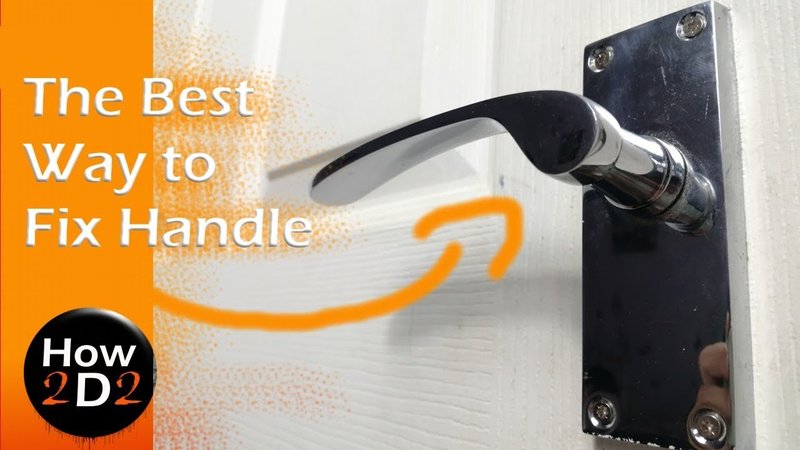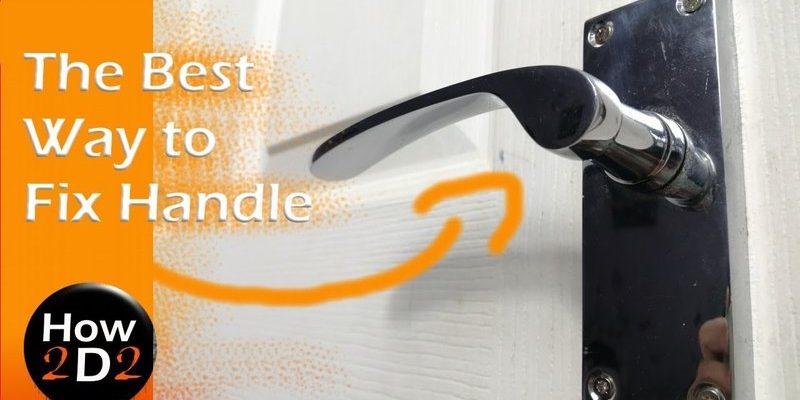
A door knob that’s too loose to turn can stem from various issues, like worn-out parts, loose screws, or even a misaligned strike plate. Think of your door knob as part of a relay team; if one runner stumbles, the whole team could falter. Let’s dive into what might be causing your door knob troubles and how to get it back in shape.
Identifying the Problem
Before jumping into repairs, it’s crucial to pinpoint why your knob is acting up. Sometimes, it’s as simple as tightening a screw. Other times, it might signal that the knob itself is wearing out. So, let’s break down the common reasons for a loose door knob, so you know what you’re dealing with.
- Loose screws: Over time, screws can become loose from regular use. A quick check can save you hours of frustration.
- Worn-out components: Like any mechanical part, door knobs can wear down. If yours is old or has been through a lot, it might need replacing.
- Misalignment: If the knob mechanism isn’t properly aligned with the latch, it can cause trouble when you try to turn it.
If you’re unsure, gently wiggle the knob. Does it feel loose? Is there visible movement? Taking a close look can help you determine the next steps.
Gather Your Tools
Before you start fixing, it’s essential to have the right tools handy. You wouldn’t tackle a baking project without measuring cups, right? Similarly, having the right tools will make the process smoother and more enjoyable. Here’s what you’ll need:
- Screwdriver: Depending on your knob, you might need a Phillips or flathead screwdriver. Most knobs use one of these types.
- Replacement parts: If the knob is worn out, you may need to purchase a new one. Make sure it matches your existing decor.
- Lubricant (optional): A little lubricant can help if the knob is difficult to turn, even after tightening it.
Having everything set before you begin can save time and prevent trips back and forth to your toolbox.
How to Tighten a Loose Door Knob
Once you’ve gathered your tools, it’s time to tighten that loose door knob. Here’s how to do it step by step:
1. Locate the screws: Most door knobs have visible screws on the side or back. If you can’t see them, sometimes they’re hidden under a decorative cover. Check for small slots where the cover can be pried off.
2. Tighten the screws: Using your screwdriver, turn clockwise to tighten. If they feel stripped or too loose, don’t force it—replacing the screws might be the next step.
3. Test the knob: After tightening, give the knob a turn. If it still feels loose, there may be more to explore.
When to Replace the Door Knob
If tightening doesn’t solve the issue, it might be time for a new knob. Here are some signs that replacement is a good idea:
– Significant wear and tear: If the knob has visible damage or feels excessively loose after tightening, it might be time for a new one.
– Frequent problems: If this isn’t the first time you’ve had issues with this knob, replacing it could save you headaches down the line.
– Aesthetic update: Sometimes, a new knob can refresh the look of your space. If you’re feeling adventurous, this might be a great excuse to try something new!
Choosing a knob isn’t just about function; consider the style and finish to match your home’s decor.
Aligning the Strike Plate
Misalignment can often be a sneaky culprit behind a loose door knob. If the strike plate (the metal piece attached to the door frame where the latch slides in) isn’t aligned properly with the knob, it can make turning the knob difficult. Here’s how to check and fix that:
1. Check the alignment: Close the door and see if the latch meets the strike plate correctly. If it doesn’t, this might be your issue.
2. Adjust the strike plate: If the latch isn’t hitting the plate correctly, loosen the screws on the strike plate and adjust its position. Once it’s lined up, tighten the screws again.
3. Test the knob again: Close the door and see if the knob turns smoothly now. If not, you may need to look deeper.
Final Checks and Maintenance Tips
After everything is back together and functioning, it’s good to do a quick check on other knobs and locks in the house. Here are some maintenance tips to keep everything running smoothly:
- Regularly check knobs: A quick once-over every few months can help catch issues early on.
- Keep them clean: Dust and grime can build up and affect function. A simple wipe down can work wonders.
- Lubricate occasionally: A drop of lubricant can keep things turning smoothly, especially if they feel sticky.
Taking these small steps can help prevent issues and prolong the life of your door knobs.
Troubleshooting an interior door knob that’s too loose to turn doesn’t have to be a daunting task. With a bit of patience, some basic tools, and the right steps, you can have that knob back in shape in no time. Whether it’s tightening screws, replacing parts, or adjusting alignments, it often comes down to a little DIY magic.
Remember, door knobs are simple mechanisms, and with a little love and care, they can serve you well for years. So, the next time that knob feels loose, you’ll know exactly what to do. Happy fixing!
